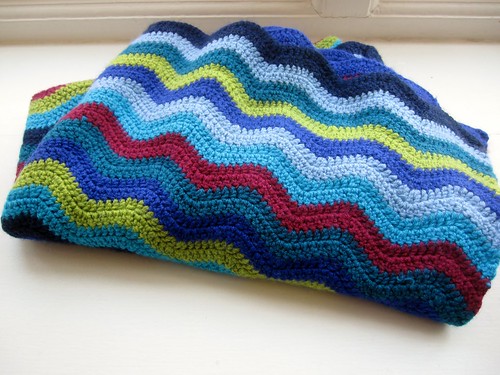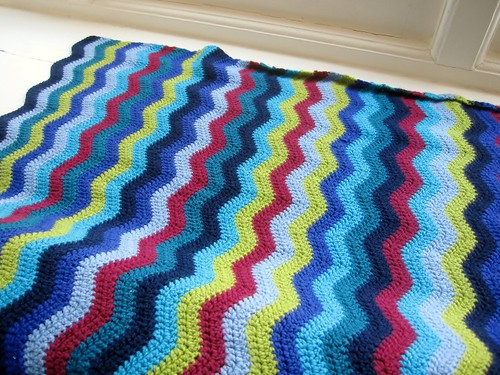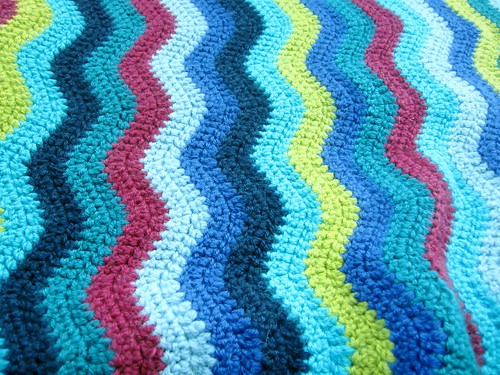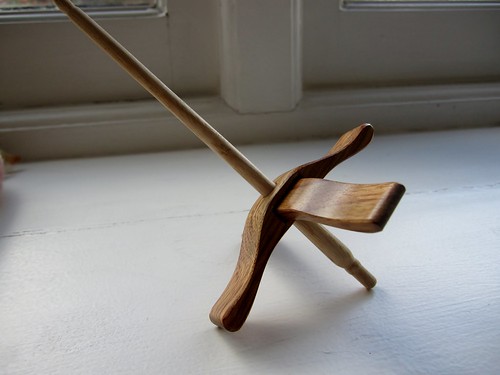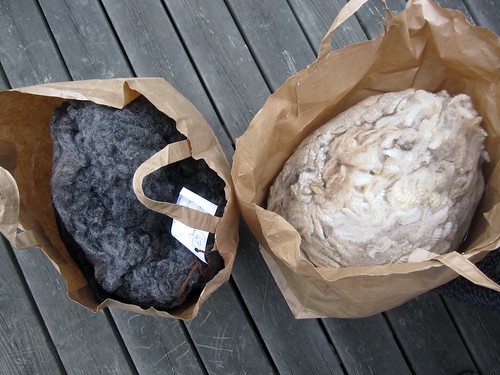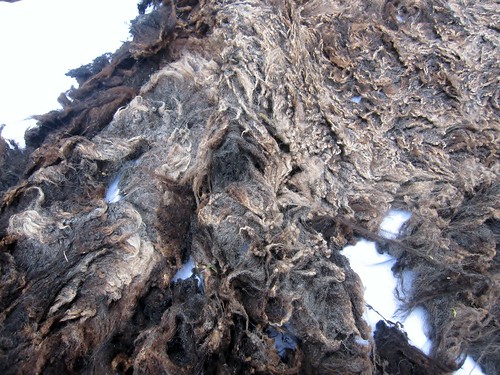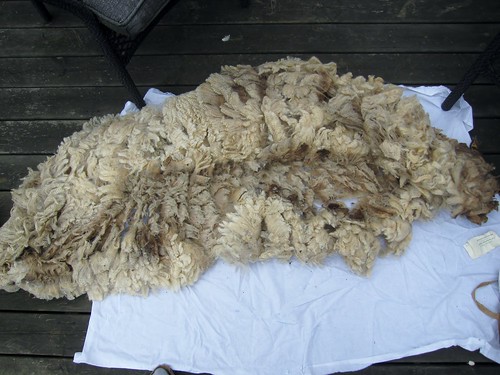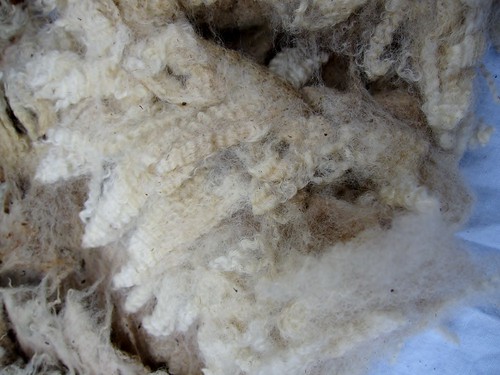Knitting science
I keep running into knitting scientists these days. There were a couple that I met at Wool House, then an article by Kim Werker in the latest issue of Knitscene. Last week I realized that five of the thirteen students that have posted in the thread for my tech editing class have some kind of science/maths/number-type of background. On the surface, it wasn't intuitively obvious to me why there might be so many science types involved in knitting, so I've been thinking about similarities in the two fields.
One argument is that fiber arts are a great creative outlet for people who spend their working days immersed in the cold hard "search for truth" world of science. But that idea assumes that science isn't creative, which could not be farther from the truth - ask anyone who's every written a grant! In fact, I think I'd argue that science and knitting are more similar then they are different.
For example, when you start a new knitting project you have to make a number of choices before you can even cast on. What exactly are you going to knit? What weight of yarn? What color? Will it be stockinette or textured? Maybe lace? What about colorwork? The creative choices are endless, and can take up more time then the actual knitting if you let them.
The same is true in science, at least in my experience of lab science: a lot of the creativity comes at the beginning of the process. What is the hypothesis? How can you test it? What is the experimental design that will best test that hypothesis and give (ideally) the clearest data? And (at the end of the day) what does that data mean for how things work*?
After that initial step, science and knitting continue to follow a similar path: follow the directions. I hope I'm not bursting anyone's bubble here when I tell you that laboratory research is nowhere near as exciting and cool as it looks on CSI - I (sadly) don't bop around in the lab listening to loud music and wearing cool goth outfits like Abby. In reality, lab science in 99% following a recipe. If you can cook, you can do molecular biology (as long as you don't get fancy and improvise). Same thing in knitting: read the directions (particularly those pesky AT THE SAME TIME bits), and do what they say. And science can be just as much of a slog as miles of endless stockinette or garter stitch - the same thing over and over and over again...drudgery comes in many forms! But at the end of the process, you will have 1) a result from your experiment that either a) answers the question or b) brings up more questions or 2) a finished garment/accessory/item that you can proudly wear and display. Knitting has a much better chance of ending up with a clear result then the experimental side of things, believe me!
Since I've been spending a lot of time recently either writing knitting patterns or thinking about editing knitting patterns, I have noticed that the process is somewhat akin to writing scientific papers. For example, in a scientific paper you need to have several key sections - you need an Abstract, an Introduction, a Results section and some Discussion, and somewhere along the way you'll also want to have a Materials and Methods section. Your abstract should give the key take home message of the paper, along with a bit of context and some description of the techniques used. The other sections are pretty self explanatory.
I've come to the conclusion that a good knitting pattern should have many of the same components:
One argument is that fiber arts are a great creative outlet for people who spend their working days immersed in the cold hard "search for truth" world of science. But that idea assumes that science isn't creative, which could not be farther from the truth - ask anyone who's every written a grant! In fact, I think I'd argue that science and knitting are more similar then they are different.
For example, when you start a new knitting project you have to make a number of choices before you can even cast on. What exactly are you going to knit? What weight of yarn? What color? Will it be stockinette or textured? Maybe lace? What about colorwork? The creative choices are endless, and can take up more time then the actual knitting if you let them.
The same is true in science, at least in my experience of lab science: a lot of the creativity comes at the beginning of the process. What is the hypothesis? How can you test it? What is the experimental design that will best test that hypothesis and give (ideally) the clearest data? And (at the end of the day) what does that data mean for how things work*?
After that initial step, science and knitting continue to follow a similar path: follow the directions. I hope I'm not bursting anyone's bubble here when I tell you that laboratory research is nowhere near as exciting and cool as it looks on CSI - I (sadly) don't bop around in the lab listening to loud music and wearing cool goth outfits like Abby. In reality, lab science in 99% following a recipe. If you can cook, you can do molecular biology (as long as you don't get fancy and improvise). Same thing in knitting: read the directions (particularly those pesky AT THE SAME TIME bits), and do what they say. And science can be just as much of a slog as miles of endless stockinette or garter stitch - the same thing over and over and over again...drudgery comes in many forms! But at the end of the process, you will have 1) a result from your experiment that either a) answers the question or b) brings up more questions or 2) a finished garment/accessory/item that you can proudly wear and display. Knitting has a much better chance of ending up with a clear result then the experimental side of things, believe me!
Since I've been spending a lot of time recently either writing knitting patterns or thinking about editing knitting patterns, I have noticed that the process is somewhat akin to writing scientific papers. For example, in a scientific paper you need to have several key sections - you need an Abstract, an Introduction, a Results section and some Discussion, and somewhere along the way you'll also want to have a Materials and Methods section. Your abstract should give the key take home message of the paper, along with a bit of context and some description of the techniques used. The other sections are pretty self explanatory.
I've come to the conclusion that a good knitting pattern should have many of the same components:
- Introductions: a description of the pattern/item at hand. Maybe it's a funny story about the inspiration, or a blurb about the potential use of the FO. I usually try to include some description about the construction, the types of techniques used, any interesting or novel bits. A more abstract-like version of this might be what I would put in the Notes section on the Ravelry page for the pattern, with a longer Introduction in the actual pattern itself.
- Materials: yarn type, yardage needed, special tools or notions, needle size and type. Fairly straightforward.
- Methods: In scientific papers, the Methods section is supposed to be detailed enough that someone reading your paper could sit down and duplicate the experiment: in reality it's not quite that simple. For a knitting pattern, this bit is critical, and it takes up the vast majority of the pattern. This is the gauge information, the stitch pattern directions and the actual steps needed to knit the item in question.
- Results and Discussion are at the discretion of the knitter. Hopefully they are successful and positive!
Once you've completed all the sections of your manuscript/pattern, it's time to send it off for some of the dreaded peer review. And if your manuscript/pattern is a good fit for the journal in question, you end up published. One of the benefits to getting a pattern accepted is that I haven't yet heard of knitwear designers being hit with page charges!
If you're a science-type of knitter/crocheter/spinner/weaver/fiber fanatic, I'd love to hear your thoughts about what draws you to fiber crafts. Do you see any strong connections between your scientific life and your yarn hobbies? Or is one an escape from the other? I'm interested to hear what you think, so leave a comment and start the conversation.
* Owning my bias as a cell/molecular biologist who spends far too much of her time drawing spaghetti diagrams of signaling pathways and trying to figure out how all the pieces fit together.





